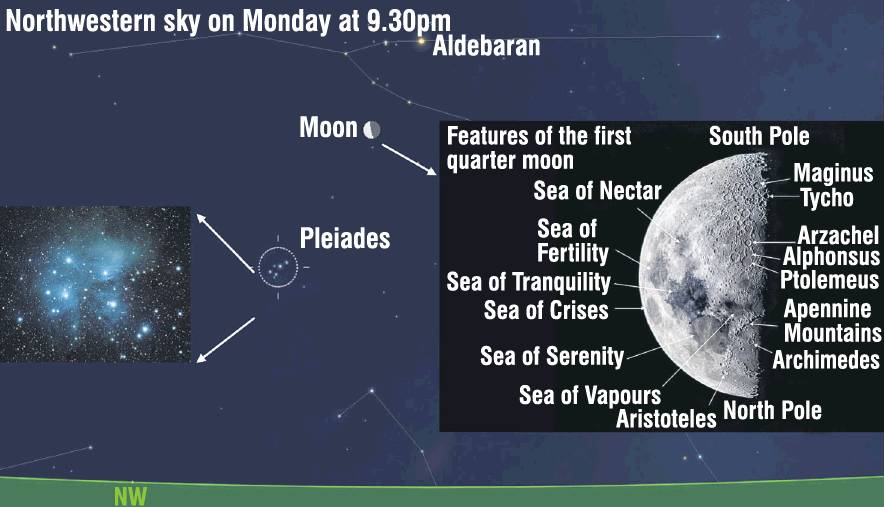
The moon was new earlier this week and will reach first quarter at 8.57am on Tuesday, March 3. This means that the next few nights offer excellent opportunities to discover the charms of the waxing lunar crescent as it traverses the constellations of Pisces and Taurus, writes Ian Griffin.
Tomorrow, an hour after the sun disappears below the western horizon, the moon will be above and to the left of Venus low in the western sky. At the same time, on Friday, our closest celestial neighbour will be higher in the sky. It can be found above and to the right of the brightest planet.
It is undoubtedly fascinating to watch the ever-changing phase and position of the moon as it travels around the sky on its regular monthly journey.
If the sky is clear after dark on Monday (March 2), keen stargazers should definitely head out for some exciting
post-sunset stargazing. The nearly first-quarter moon will be 45% illuminated, with some beautiful craters on show close to the terminator.
Despite the bright moonlight, you should easily be able to pick out the orange-coloured Aldebaran, the pre-eminent star in Taurus, and the 15th-most-brilliant star in the entire sky.
Aldebaran will be roughly 5deg above the moon. It will probably be twinkling madly due to its relatively low altitude.
Monday evening is also a great time to use the moon as a helpful wayfinding tool if you want to spot the most beautiful star cluster in the sky. This is the Pleiades (called Matariki by Maori astronomers).
If you draw an imaginary line from Aldebaran through the moon, and extend it on the other side for roughly 8deg, Matariki’s brightest stars will be visible as a delightful condensed asterism of between four and eight stars, depending on how good your eyesight is.
If you have binoculars, you will get to appreciate the full beauty of this magnificent stellar assemblage. While the best views of the Pleiades always occur at new moon when the sky is dark, it is certainly a part of the heavens worth exploring whenever clouds are absent.












